
Apple began selling the first Macintoshes based on the PowerPC processor in 1994. The PowerPC was Apple, IBM, and Motorola’s answer to the Intel Pentium that was running on DOS/Windows machines at the time. The PowerPC not only gave the Mac the performance it needed to compete, but did it in less space, with less heat, and with a lower cost than its competition. Despite its performance, cost, size, and heat characteristics, the first line of PowerPC processors was not yet a good fit for a portable. Soon after the first Power Macs began hitting the market Apple finally released a portable with the three-year-old 68040 inside. A year and a half later, the first PowerPC PowerBook was born.
Released in August 1995, the PowerBook 5300 series is the first PowerBook to include the new PowerPC CPU that was at the heart of most of Apple’s desktop line at the time. The 5300 uses a new variant of the PowerPC called the 603e, which is a lower-power variant of the 601 used in desktops. It runs at 100 or 117 MHz but due to its low-power design and lack of L2 cache churns out performance similar to a 66 or 80 MHz PowerPC 601s used in the desktops from the prior year.
Design & Features

The 5300 ships with an entirely new case design that is far less curvy than the 500 series models that it replaces, making it almost a pound lighter, an inch less deep, and slightly thinner. For the first time in an American PowerBook the case is entirely black, not black and gray like the 500 series. Many of the tapered edges and rounded corners of the 500 series are gone, replaced by a more rectangular design. The squarer appearance allowed Apple to fit in a larger screen, larger keyboard, and larger expansion bay.
The PowerBook 500 series has a PDS slot tucked away in one of the battery compartments allowing that compartment to be used as an expansion bay. Unfortunately the bay is not large enough to accommodate a removable media drive which severely limits its appeal. The 5300’s bay is large enough to fit a 3.5″ drive such as a floppy drive (included), a hard drive, zip drive, DynaMo drive, or even a power adapter to lighten your laptop bag. The PC Card cage that is available for the 500 series’ expansion slot is built into the 5300. It accepts two Type II or one Type III card and leaves the expansion bay free for other drives. The 5300 even has a PDS slot, located under the keyboard, which holds the video out card on higher end models. A few third party expansion boards were made for it that provided external video or networking.
While the 5300 gains a full-sized expansion bay, it loses an extra battery bay. Unlike the 500 series, there is no way to put two batteries into the machine for extended run time. That wasn’t supposed to be an issue as the 5300 was slated to include Apple’s first application of high capacity Lithium Ion batteries. According to Macworld’s November 1995 review, the new batteries would provide three times the run time of one 500 series battery (about 4 hours vs 1.5 hours). One battery in the 5300 would outlast two in a 500 series.

Apple again increased the screen size of its PowerBook line from 9.5″ on the 500 series to 10.4″ on the 5300. An 800 x 600 pixel resolution screen is available for the first time on the highest end model, even when displaying thousands of colors. Even the low end models get true 640 x 480 pixel resolution when displaying thousands of colors. This is a huge improvement over the 500 series’ 640 x 400 pixel screen at thousands of colors (or 640 x 480 at 256 colors). As for connectivity, the 5300 includes Apple’s standard ADB, Serial, SCSI, Audio Out, Audio In, Video Out, and an Infrared Data Port. The IR port is a first on the 5300 series and allows users to transfer files (slowly) over wireless to another computer or PDA with an IR port. This technology came out long before WiFi existed and was a huge deal at the time. There are two ports that are missing that were previously available on the 500 series – Ethernet and modem. The only way to get either into a 5300 is via a PC card. Oddly, the 5300 does not include the new tappable trackpad that is available in the Duo 2300c and lower-end PowerBook 190 which were announced at the same time. Apple cited parts and shipping dates being an issue and promised that users could upgrade to a better trackpad in the future.
Configurations
The 5300 originally shipped in four configurations. The base 5300 ($2,300) has a 9.5″ gray scale passive matrix screen, a 100 MHz CPU, 8 MB RAM, and a 500 MB hard drive. The 5300cs ($2,900) includes a 10.4″ passive matrix color screen and the same CPU, RAM, and hard drive configuration. For an additional $800 the cs could be upgraded to 16 MB RAM and a 750 MB hard drive. The 5300c ($3,900) adds an active matrix color screen to the base 5300ce and could be upgraded to the 16/750 configuration for an additional $800. These models are all limited to 640 x 480 screen resolution regardless of technology. The top-of-the-line 5300ce ($6,800) includes a 117 MHz CPU, 32 MB of RAM, a 1.1 GB hard drive, and the ability to display 800 x 600 resolution.
Positive Reviews
In its November 1995 review Macworld was mostly positive, giving the 5300 high marks for its existence as a PowerPC notebook, its full-sized expansion bay, infrared connectivity, and powerful new batteries. The review noted that the 5300’s 64 MB RAM ceiling was “more than you’ll probably ever need”; ironic since the last version of the Mac OS to run on the 5300, OS 9.1, needs almost 64 MB just to boot.
The review did bring to light a couple of issues with the 5300. The biggest issue was its lack of performance. Packing a PowerPC, one would expect the 5300 to perform pretty well, maybe not as well as its desktop counterparts, but better than a PowerBook 500 series. Unfortunately that was not the case. While the inclusion of an FPU made the 5300 about 75% faster than a 540c in CPU-intensive tasks, it was only about 25% faster in general-use tasks. This was due largely to the CPU’s lack of an L2 cache. Again one of the biggest complaints about the PowerBook was its performance, and the 5300 did little to improve it, especially against the PC competition – a similarly configured 75 MHz Pentium notebook running Windows 95 was nearly twice as fast as the fastest 5300.
Quality Issues
 Reviews were positive and demand was high when the PowerBook 5300 hit store shelves in 1995. Apple immediately ran into issues producing enough machines to satisfy demand, which sounds like a good thing, but isn’t. If a company can’t produce enough products to sell to its customers it risks losing their sales altogether. Windows 95 had recently been released and its Mac-like interface and low cost hardware were enticing. Apple couldn’t afford to not have enough product to sell.
Reviews were positive and demand was high when the PowerBook 5300 hit store shelves in 1995. Apple immediately ran into issues producing enough machines to satisfy demand, which sounds like a good thing, but isn’t. If a company can’t produce enough products to sell to its customers it risks losing their sales altogether. Windows 95 had recently been released and its Mac-like interface and low cost hardware were enticing. Apple couldn’t afford to not have enough product to sell.
Eventually supply would meet demand, but other issues arose before that occurred. The brand new high capacity LiON batteries were recalled almost immediately after release due to a risk of fire and explosion. Instead of working out the battery issues, Apple shipped the lower capacity NiCd batteries they had developed for the PowerBook 190 (which shared the same case design). Run time was cut by 50%.
On top of the battery issues the 5300 exhibited major quality control problems. Some units, brand new out of the box, simply refused to turn on and had to be sent back. Others had defective hinges that broke and cases that cracked. The AC adapter port was prone to snapping off during light use. Users had issues when using a PC card and an expansion bay module at the same time. Electrical signals interfered with hard drive performance and network connectivity. There were also numerous software incompatibilities. Apple had to issue multiple software updates, dealer recalls, and warranty extensions. Even though many of these problems were typical in the computer industry they tarnished the 5300’s reputation forever.
The 5300 in Summary

The PowerPC promised to close the Macintosh performance gap with its PC competitors and it mostly succeeded on the desktop. It took more time to get the technology into the portable line that was already taking a beating. For this reason alone the PowerBook 5300 should have been a hit. Apple was so proud of it that it was featured in the movie Mission Impossible. Add to that the larger screens, PC Cards, Infrared data transfer, and removable expansion bay and it should have been a knockout. It wasn’t.
The performance that users expected from a PowerPC machine was just not a reality due to a combination of the cacheless CPU, non-optimized software, and the extensive amount of emulated 68k code left in the Mac OS. Compared to a PC notebook at the same price, the 5300 was a snail. The loss of the high-capacity LiIon battery took away another one of the 5300’s strong points (though it still couldn’t match the runtime of a PC notebook even with the battery). Add to that a string of quality problems, bad press, and Apple’s inability to manufacture enough to sell and you can see why the 5300 has one of the worst reputations of any Apple product.
The 5300 went down in history as one of Apple’s lowest quality products ever.
The PowerBook 190
The PowerBook 190 was released at the same time as the 5300 and shares the same case and basic features. The main difference is that it lacks a PowerPC processor and instead uses the same 33 MHz 68LC040 as the 500 series. It is the last 68k PowerBook released and filled out the low-end of Apple’s laptop offerings. It includes the same expansion bay and PC card slots as the 5300 and could be configured with an infrared port and video out port if desired. The base model 190 includes a 9.5″ grayscale passive-matrix display with 4 MB RAM and a 500 MB hard drive for $1,700. An additional 4 MB of RAM could be added for an additional $200. A higher-end model with a 10.4″ dual-scan passive matrix color display was available for $2,300.
In the Museum
I do not actually own a 5300 – I own its cousin the 190. The 190 is identical to the 5300 except for its CPU, trackpad, port options. The 190 is also slightly thinner and lighter (by 0.2″ and 0.2 lbs). Otherwise they are the same and work fine for a physical comparison with other PowerBooks. The keyboard is the same as the keyboard on previous PowerBooks – mushy, with an odd arrow key layout (horizontal), and missing duplicate command and option keys on the right side of the space bar. For its time the 5300 was an acceptable size and weight, but it’s rather thick compared to today’s laptops.
One of the cooler things about the 5300 is the expansion bay, which I love because it makes the machine versatile. Unfortunately the release button for the bay is on the bottom of the case which makes it inconvenient to access. It’s also small, hard to find, and hard to activate without flipping the laptop over – not good if you want to swap a drive while you are working. This small-button-underside design was used on the 1400 and 3400 series as well but was finally rectified with the front-mounted levers that debuted on the G3 Wallstreet. In addition to the expansion bay, you can also access the memory and hard drive by removing two screws on the bottom of the case and flipping up the keyboard, a design also used in subsequent PowerBooks. The 5300 does not support CPU upgrades which is a shame because of its poor performance.
Images
References
“PowerPC Portables” – Galen Gruman, MacWorld Magazine, November 1995, pp. 95 – 100
“Apple Macintosh PowerBook Specs” – EveryMac.com – http://www.everymac.com/systems/apple/powerbook/index-powerbook.html
MacTracker (Software) – Ian Page – http://mactracker.ca/





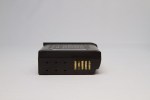
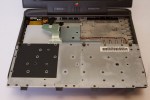
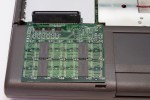










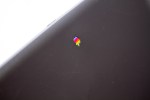







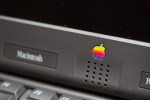
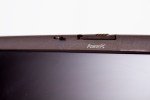


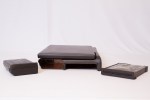















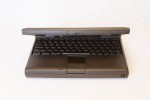
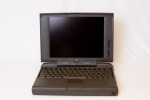
One Reply to “”